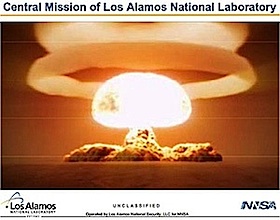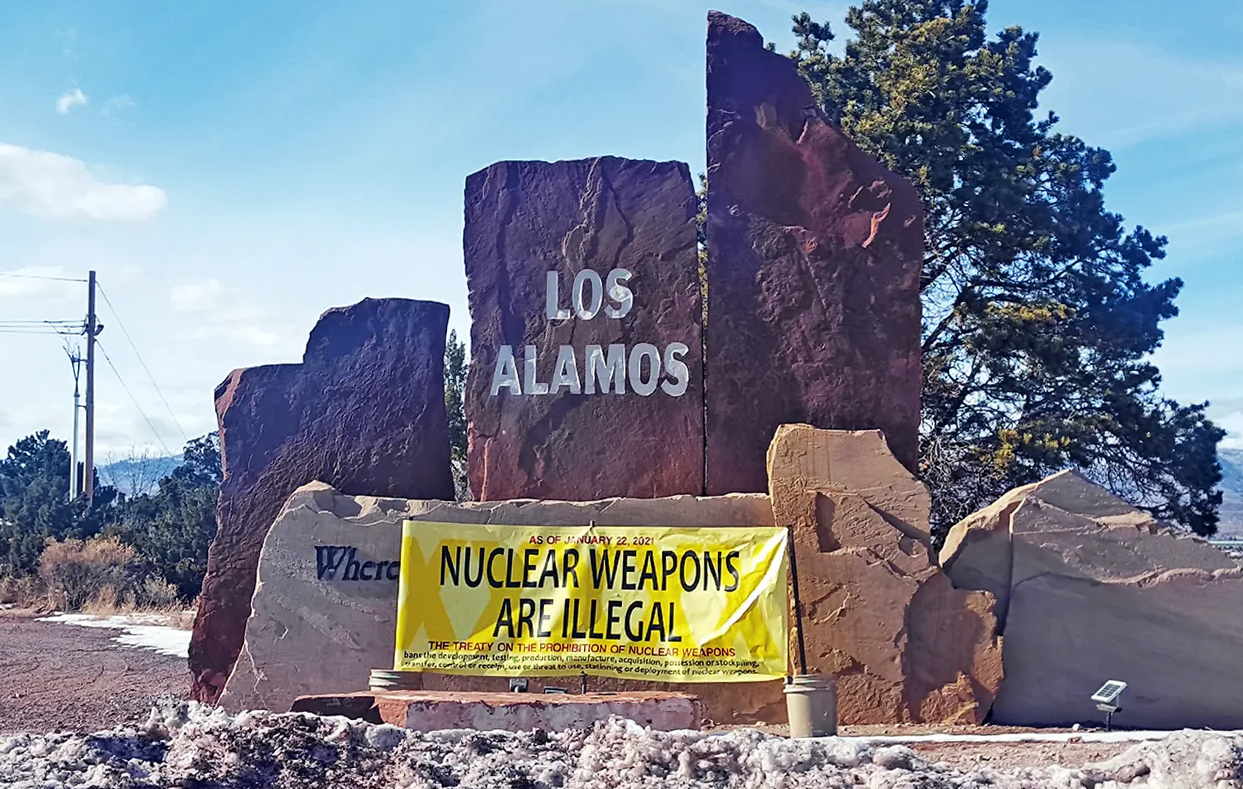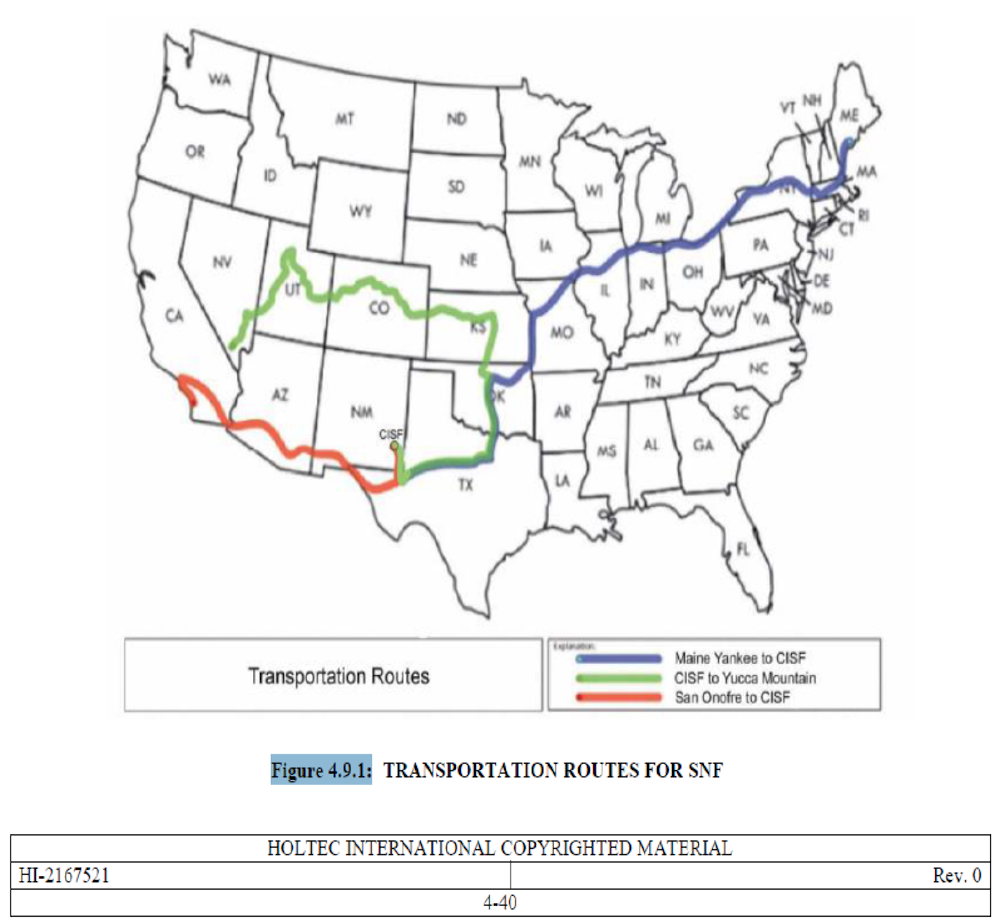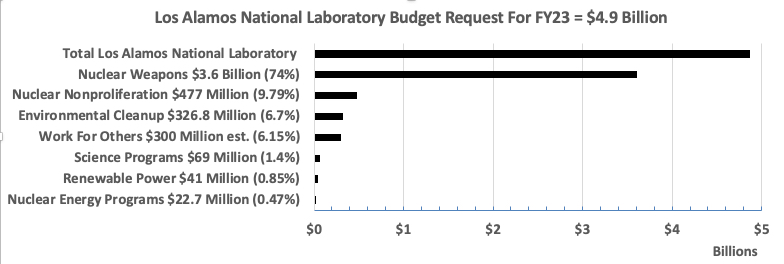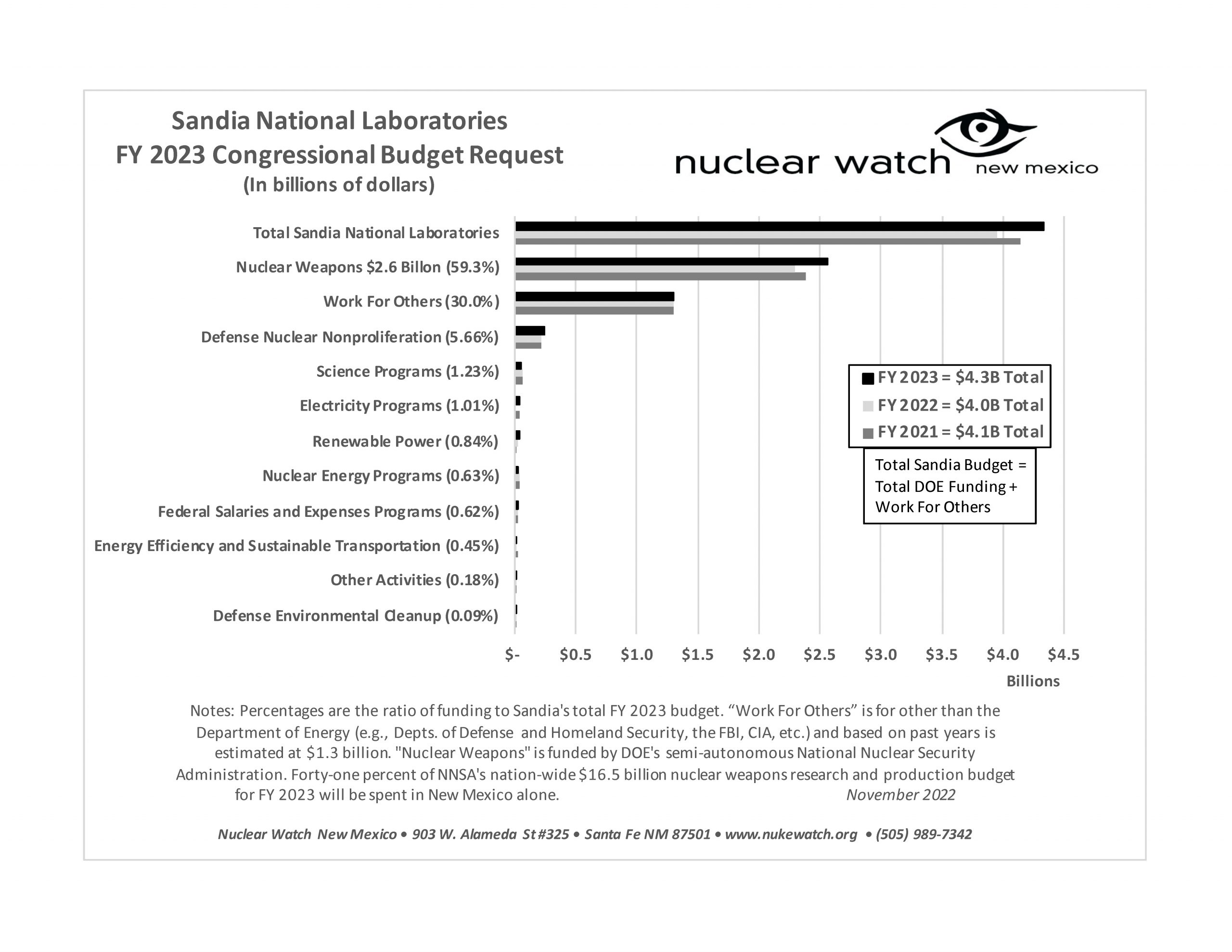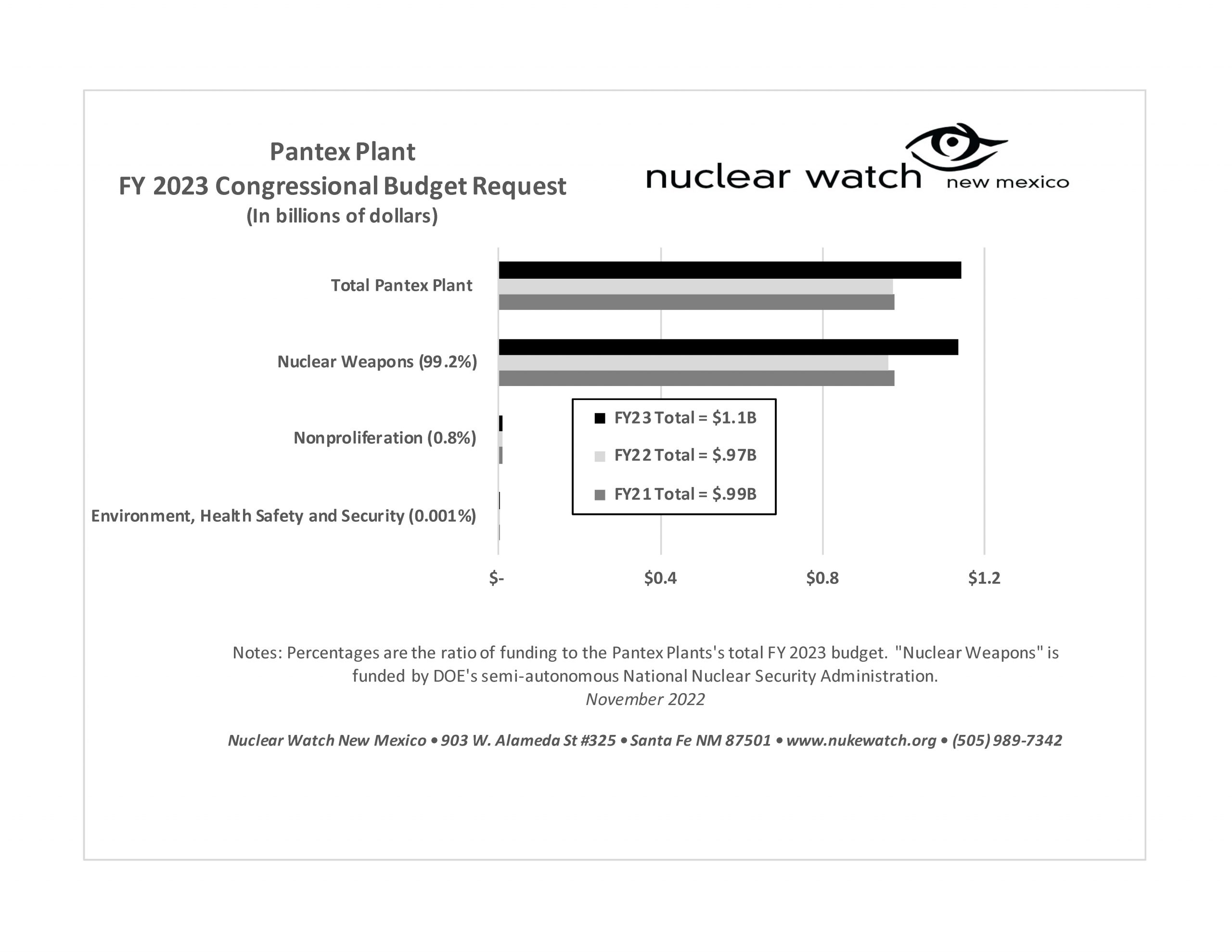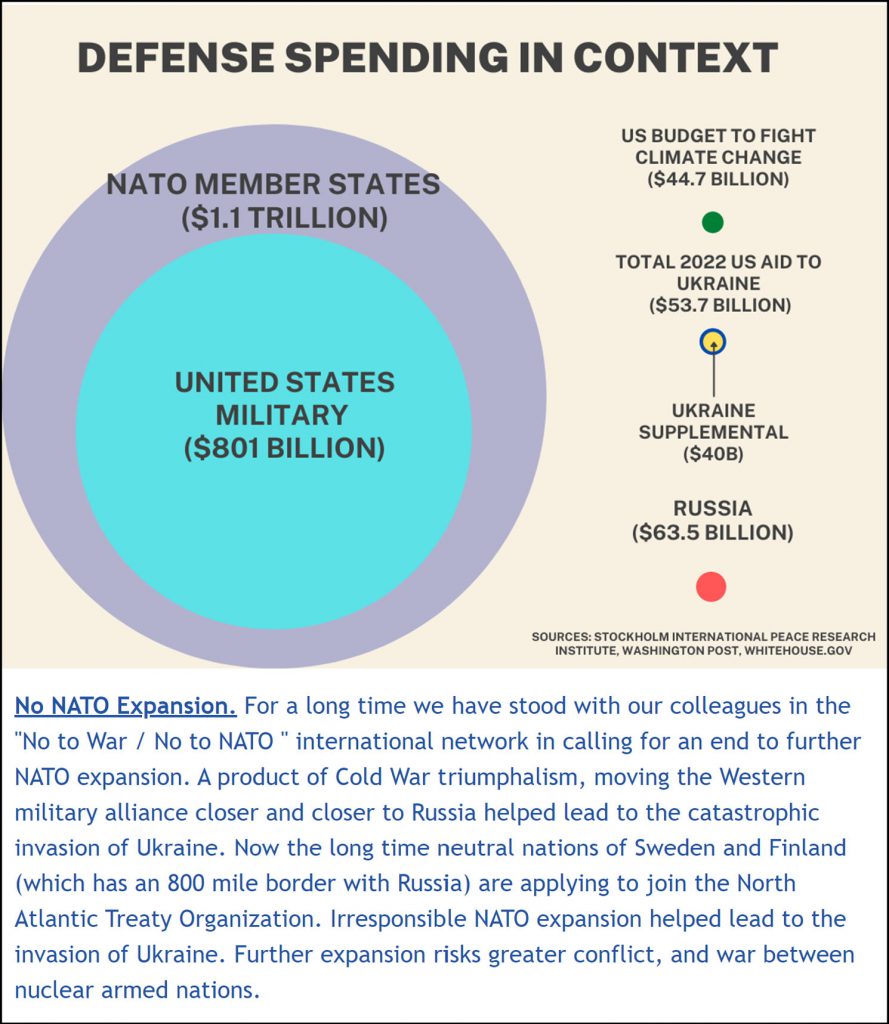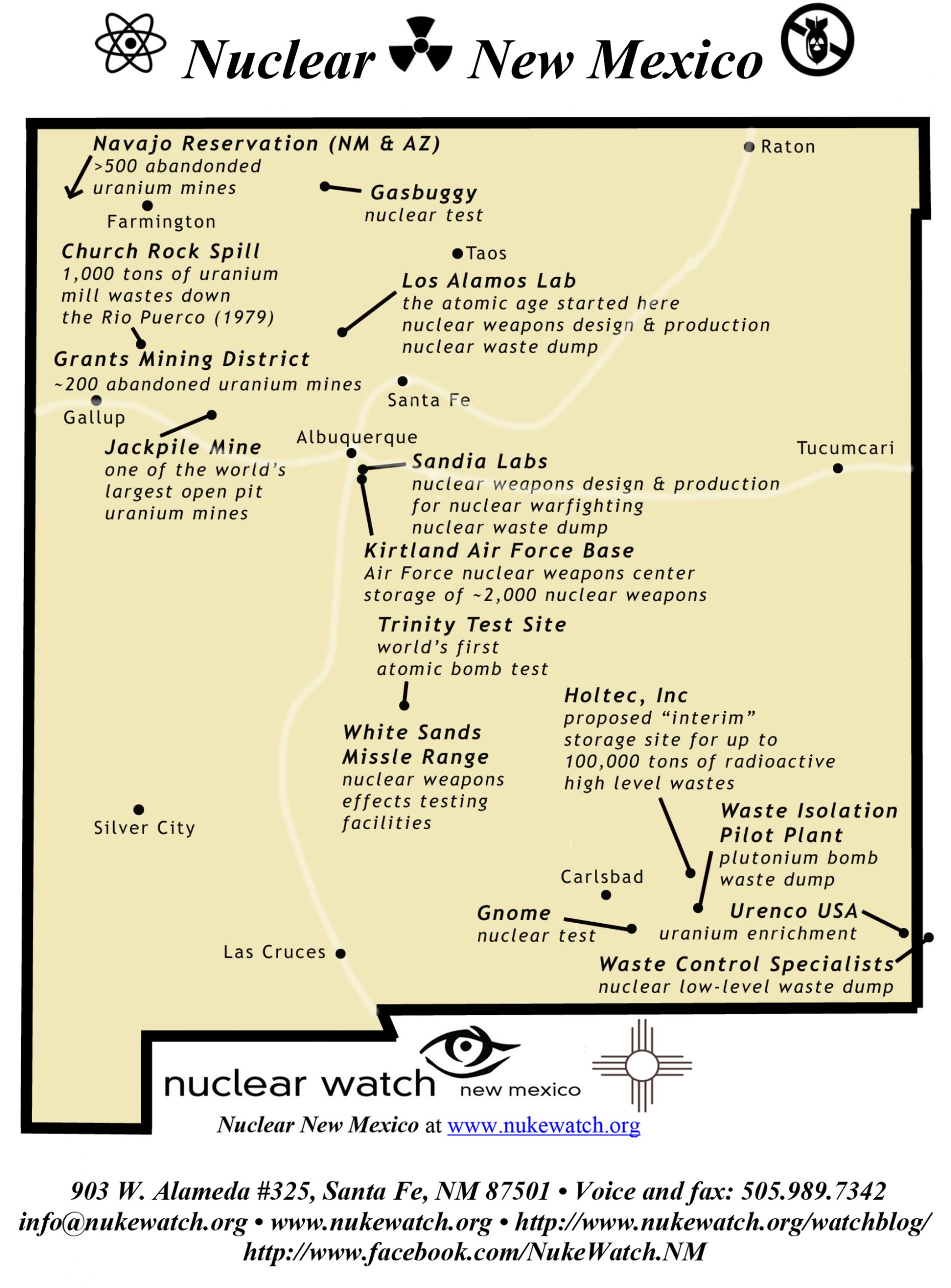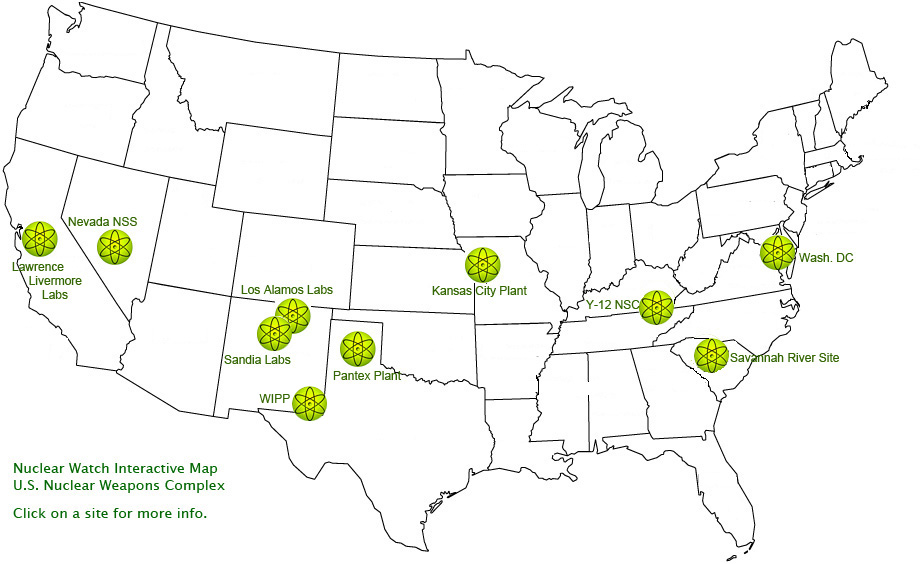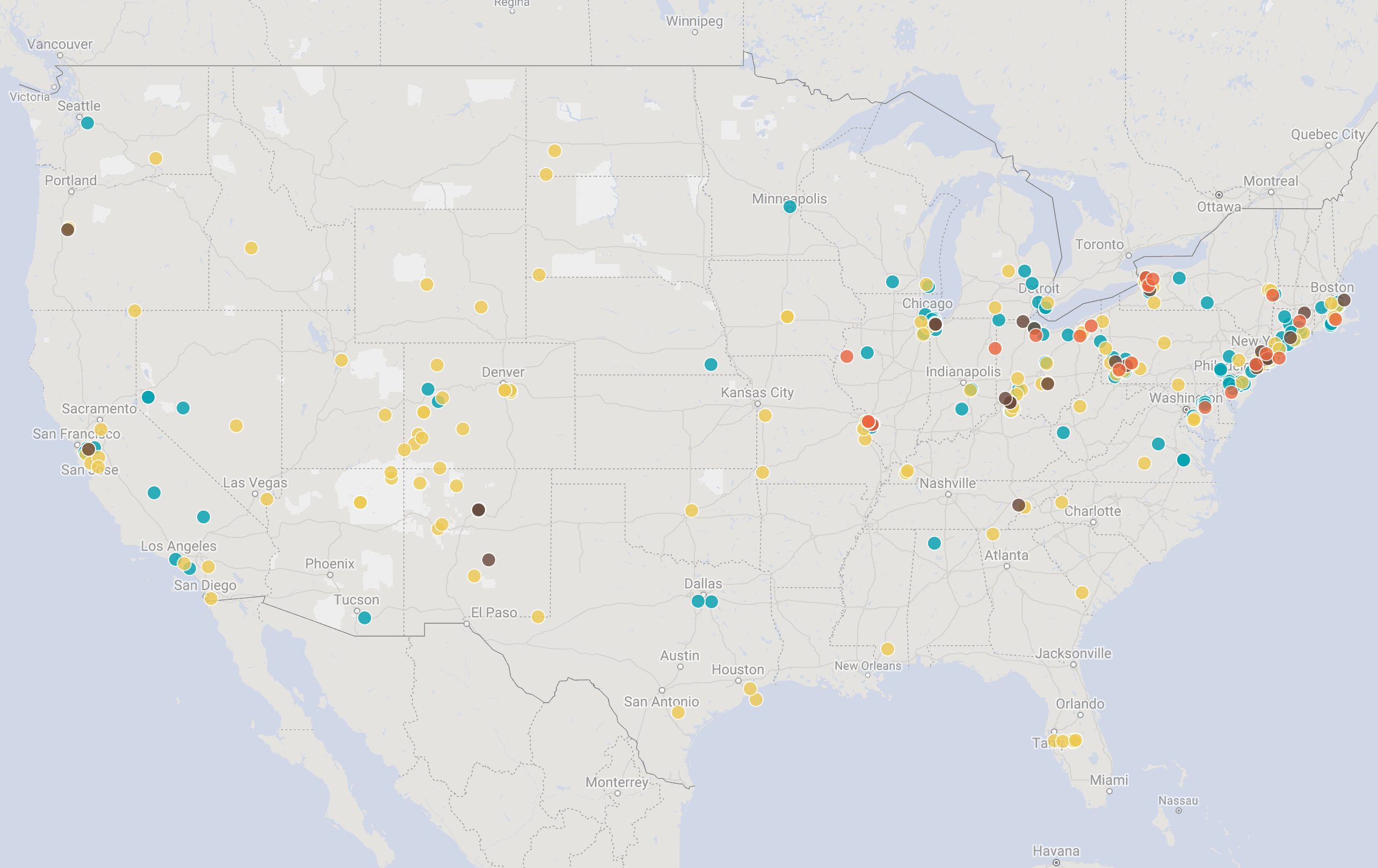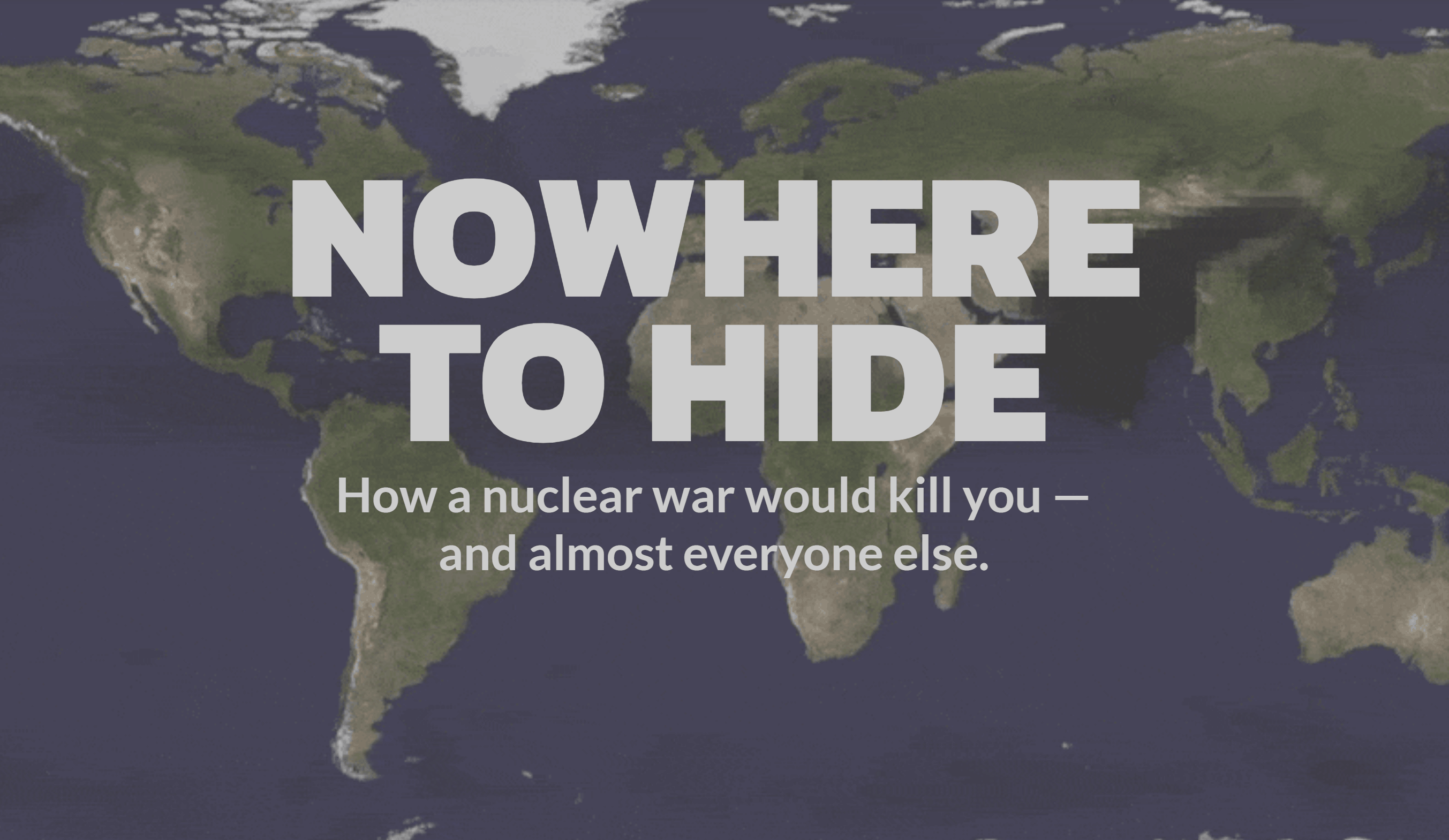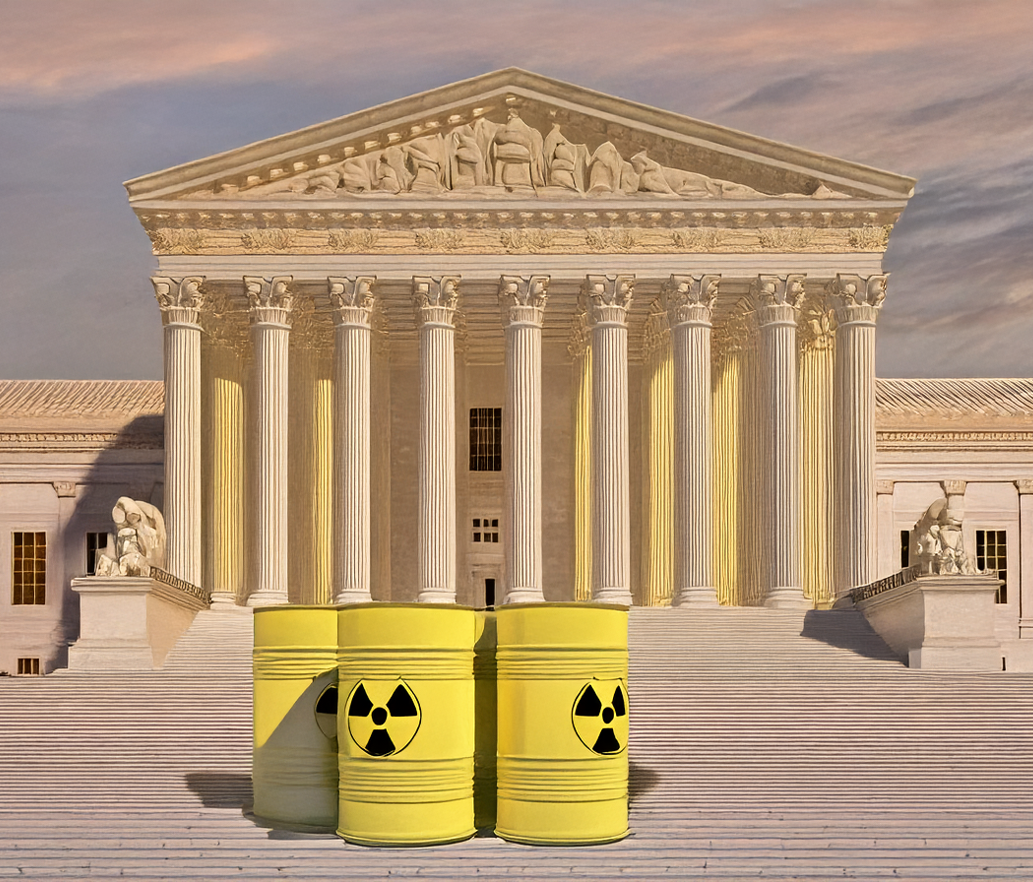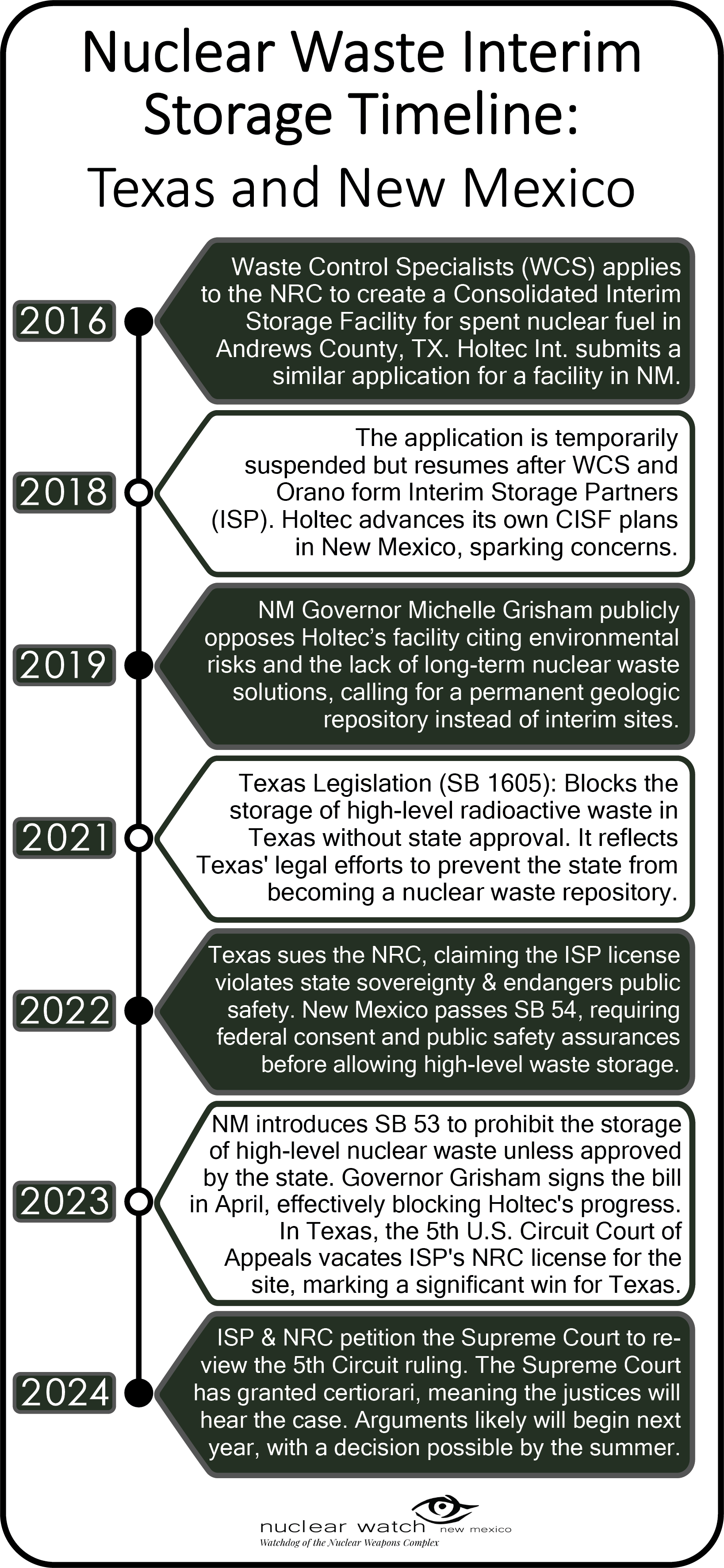QUOTE OF THE WEEK
Nothing Found
It seems we can’t find what you’re looking for. Perhaps searching can help.
LANL’s Central Mission: Los Alamos Lab officials have recently claimed that LANL has moved away from primarily nuclear weapons to “national security”, but what truly remains as the Labs central mission? Here’s the answer from one of its own documents:
LANL’s “Central Mission”- Presented at: RPI Nuclear Data 2011 Symposium for Criticality Safety and Reactor Applications (PDF) 4/27/11
Banner displaying “Nuclear Weapons Are Now Illegal” at the entrance in front of the Los Alamos National Lab to celebrate the Entry Into Force of the Nuclear Weapon Ban Treaty on January 22, 2021
Nothing Found
It seems we can’t find what you’re looking for. Perhaps searching can help.
Follow the Money!
Map of “Nuclear New Mexico”
Nuclear Watch Interactive Map – U.S. Nuclear Weapons Complex
In 1985, US President Ronald Reagan and and Russian President Mikhail Gorbachev declared that “a nuclear war cannot be won and must never be fought.”
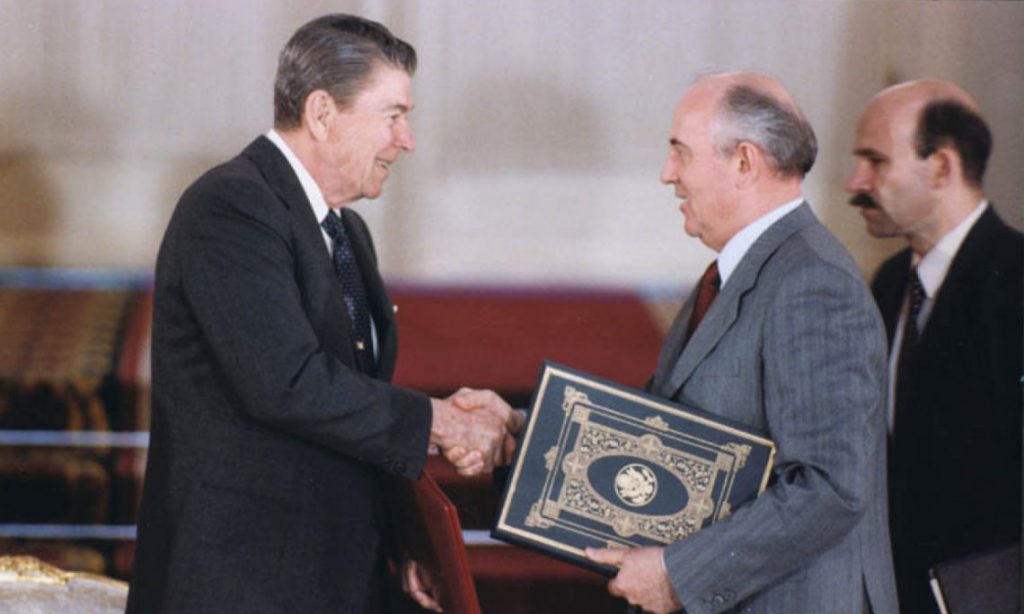
Waste Lands: America’s Forgotten Nuclear Legacy
The Wall St. Journal has compiled a searchable database of contaminated sites across the US. (view)
Related WSJ report: https://www.wsj.com
2022 BLOG POSTS
Nothing Found
It seems we can’t find what you’re looking for. Perhaps searching can help.
New & Updated
U.S. Nuclear Weapons Sites Violated Rules, Judge Finds
In a statement Jay Coghlan, the director of Nuclear Watch New Mexico and a co-plaintiff in the lawsuit, said, “These agencies think they can proceed with their most expensive and complex project ever without required public analyses and credible cost estimates.”
By Matthew Impelli, Newsweek | October 4 newsweek.com
A federal judge ruled this week that some nuclear weapons sites in the U.S. do violate environmental regulations.
On Thursday, a federal judge ruled that the National Nuclear Security Administration violated environmental regulations by failing to adequately assess the environmental impact of its plan to expand plutonium pit production at facilities in South Carolina and New Mexico.
The case involves a lawsuit that targeted a 2018 plan to establish two plutonium pit production sites—one at South Carolina’s Savannah River and the other at Los Alamos National Laboratory in New Mexico. Plaintiffs argued the plan was based on an outdated environmental impact study, which failed to properly assess the implications of simultaneous production at both locations. They also insisted the plan weakened safety and accountability measures for the multibillion-dollar nuclear weapons program and its associated waste disposal.
In the ruling on Thursday, Judge Mary Geiger Lewis said, “Defendants neglected to properly consider the combined effects of their two-site strategy and have failed to convince the court they gave thought to how those effects would affect the environment.”
‘Significant Victory’: Court Rules Planned Plutonium Pits for New Nukes Violate US Law
“Public scrutiny is especially important because the activities at issue here, by their very nature, result in the production of dangerous weapons and extensive amounts of toxic and radioactive waste,” a plaintiffs’ lawyer said.
By Olivia Rosane, CommonDreams | October 3 commondreams.com
In what advocates called a major win for frontline communities and the rule of law, a U.S. district court judge ruled on Monday that the federal government could not move forward with producing plutonium pits—”the heart and trigger of a nuclear bomb“—at two proposed sites in New Mexico and South Carolina.
Instead, Judge Mary Geiger Lewis agreed with a coalition of nonprofit community groups that the Department of Energy (DOE) and the National Nuclear Security Administration (NNSA) violated the National Environmental Policy Act (NEPA) by failing to fully consider alternatives to producing the pits at New Mexico’s Los Alamos National Laboratory and South Carolina’s Savannah River Site (SRS). Now, the federal government must conduct a full environmental impact statement of how pit production would work at sites across the U.S.
“This is a significant victory that will ensure NEPA’s goal of public participation is satisfied,” attorney for the plaintiffs Ben Cunningham, of the South Carolina Environmental Law Project, said in a statement. “Public scrutiny is especially important because the activities at issue here, by their very nature, result in the production of dangerous weapons and extensive amounts of toxic and radioactive waste. I hope the public will seize the upcoming opportunity to review and comment on the federal agencies’ assessment.”
The Bulletin – Nowhere to hide: How a nuclear war would kill you — and almost everyone else.
“The impacts of nuclear war on agricultural food systems would have dire consequences for most humans who survive the war and its immediate effects.
The overall global consequences of nuclear war—including both short-term and long-term impacts—would be even more horrific causing hundreds of millions—even billions—of people to starve to death.”
By François Diaz-Maurin, Design by Thomas Gaulkin | Bulletin of the Atomic Scientists | October 20 thebulletin.org
This summer, the New York City Emergency Management department released a new public service announcement on nuclear preparedness, instructing New Yorkers about what to do during a nuclear attack. The 90-second video starts with a woman nonchalantly announcing the catastrophic news: “So there’s been a nuclear attack. Don’t ask me how or why, just know that the big one has hit.” Then the PSA video advises New Yorkers on what to do in case of a nuclear attack: Get inside, stay inside, and stay tuned to media and governmental updates.
But nuclear preparedness works better if you are not in the blast radius of a nuclear attack. Otherwise, there’s no going into your house and closing your doors because the house will be gone. Now imagine there have been hundreds of those “big ones.” That’s what even a “small” nuclear war would include. If you are lucky not to be within the blast radius of one of those, it may not ruin your day, but soon enough, it will ruin your whole life.
Today is the 10th Annual International Day for the Total Elimination of Nuclear Weapons
Today, September 26th, 2024, marks a significant milestone—the 10th annual UN-designated International Day for the Total Elimination of Nuclear Weapons. This day, established to promote global nuclear disarmament, saw a high-level meeting at the United Nations. During the event, UN Secretary-General António Guterres delivered a powerful message, urging nuclear-armed states to
“stop gambling with humanity’s future.”
He emphasized the urgent need for countries to honor their disarmament obligations and, as a critical first step, commit to never using nuclear weapons under any circumstances. Guterres also called for maximum transparency from nuclear-weapon states in all matters related to their arsenals.
The push for nuclear disarmament is not only a global concern but also resonates deeply on a local level. Archbishop John C. Wester of Santa Fe, New Mexico, has been a vocal advocate for eliminating nuclear weapons. As the leader of an archdiocese in a state that houses key nuclear facilities, including the Los Alamos National Laboratory, Wester has taken a moral stand against the existence and potential use of nuclear arms. His 2022 pastoral letter, Living in the Light of Christ’s Peace: A Conversation Toward Nuclear Disarmament, highlighted the ethical and spiritual necessity of eliminating these weapons, emphasizing their devastating potential and the grave responsibility to protect future generations from such destruction.
As we reflect on the long, devasting history of the nuclear weapons complex, leaders like Archbishop Wester remind us that the path to a world without nuclear weapons is not just a political or strategic issue but also a profound moral imperative. Through sustained international cooperation and local advocacy, the vision of a nuclear-free world might one day become a reality.
RECA Advocates on Capitol Hill Renew Push for Nuclear Radiation Victim Compensation This Week
This week saw important developments surrounding the Radiation Exposure Compensation Act (RECA), which provides compensation to individuals affected by U.S. nuclear testing and uranium mining and expired in June earlier this year, leaving many who were exposed to radiation without compensation. Advocates and lawmakers are intensifying efforts to push Speaker Mike Johnson to bring RECA back to the House floor for a vote.
Two Native American women, Linda Evers and Tina Cordova, have been at the forefront of this fight, advocating tirelessly to preserve and extend RECA’s provisions. Their work has resonated powerfully, especially in New Mexico, where uranium mining and nuclear tests have left entire communities facing severe health crises. These populations have been disproportionately impacted by radiation and suffered from generations of exposure to radioactive contamination, leading to chronic illnesses, cancers, and premature deaths. The situation is especially dire for Native American and rural communities, who have long borne the brunt of this toxic legacy, with little to no compensation or acknowledgment. The fight to extend RECA is not just about justice—it’s about survival for those still suffering the long-term effects of these catastrophic policies.
In a recent Washington, D.C. event, activists from New Mexico voiced their frustrations over the lack of progress, pushing lawmakers to extend the act and increase compensation limits. See more on this in the news report above from KOB 4.
Plutonium Found in Los Alamos at Levels Comparable to Chernobyl Spark Public Outrage
Extreme contamination in Acid Canyon raises concerns over public safety and environmental health.
By Tibi Puiu, ZME Science | September 20, 2024 zmescience.com

A new study has revealed alarming levels of plutonium contamination near Los Alamos, New Mexico, the site where the first atomic bomb was developed. Radioactive contamination at Los Alamos may sound unsurprising but cleanup efforts by the U.S. government during the 1960s supposedly reduced it to safe levels. Today, the region welcomes many hikers and outdoor enthusiasts who embark on its trails.
The findings have led researchers and watchdog groups to call for immediate federal action. However, the government maintains that the area is safe for recreational use.
The contamination is concentrated in Acid Canyon, a site that once served as a dumping ground for nuclear waste from the Los Alamos National Laboratory. Michael Ketterer, a Northern Arizona University scientist and lead researcher on the project, described the situation as unprecedented in his decades-long career.
“What I found here in Acid Canyon is pretty much the most extreme plutonium contamination scenario . . . in an off-site, uncontrolled environmental setting that I’ve ever seen in my career,” Ketterer told the New Mexico Political Report, adding that the contamination levels are comparable to those found near the Chernobyl Nuclear Power Plant in Ukraine.
A Hidden Legacy of Contamination

Acid Canyon’s contamination stems from its history as a disposal site for radioactive waste from 1943 until 1963. The Los Alamos National Laboratory, under the direction of the Department of Defense, piped liquid nuclear waste into the canyon. Over the years, the site has been the focus of cleanup efforts. But Ketterer’s recent findings suggest that those efforts may not have been sufficient at all.
New study makes harrowing discovery in soil near birthplace of atomic bomb: ‘One of the most shocking things I’ve ever stumbled across’
The radioactive material could be absorbed by plants and eventually endanger the rest of the food chain.
By Kristen Lawrence, The Cooldown | September 20, 2024 thecooldown.com
A new study has made a troubling discovery about the health of ecosystems near Los Alamos, New Mexico, where the atomic bomb was born.
Scientists measured plutonium levels in recreational areas near the nuclear site and found they were similar to those detected at the Chernobyl nuclear disaster site in Ukraine.
What’s happening?
According to the Guardian, a Northern Arizona University research team discovered “extreme concentrations” of plutonium in the soil, plants, and water near Los Alamos.
Michael Ketterer, a NAU scientist and the study’s lead researcher, told the outlet that plutonium concentrations near New Mexico’s Acid Canyon — a popular hiking and recreational spot — were some of the highest he’d ever encountered in public spaces in the U.S. throughout his career.
“This is one of the most shocking things I’ve ever stumbled across in my life,” he told the Guardian, adding that the radioactive material is “hiding in plain sight.”
Meanwhile, the Department of Defense recently unveiled plans to increase production of plutonium pits — a critical part of nuclear weapons — at the Los Alamos site.
Editorial: US Catholics must face up to the nuclear threat, and act
“The silence, given the time, treasure and human resources devoted to the continued development of nuclear weapons, has been deafening. It amounts to a chilling complicity of the nation’s largest Christian community in a mega-death industry.”
NCR Editorial Staff, National Catholic Reporter | September 17, 2024 ncronline.org
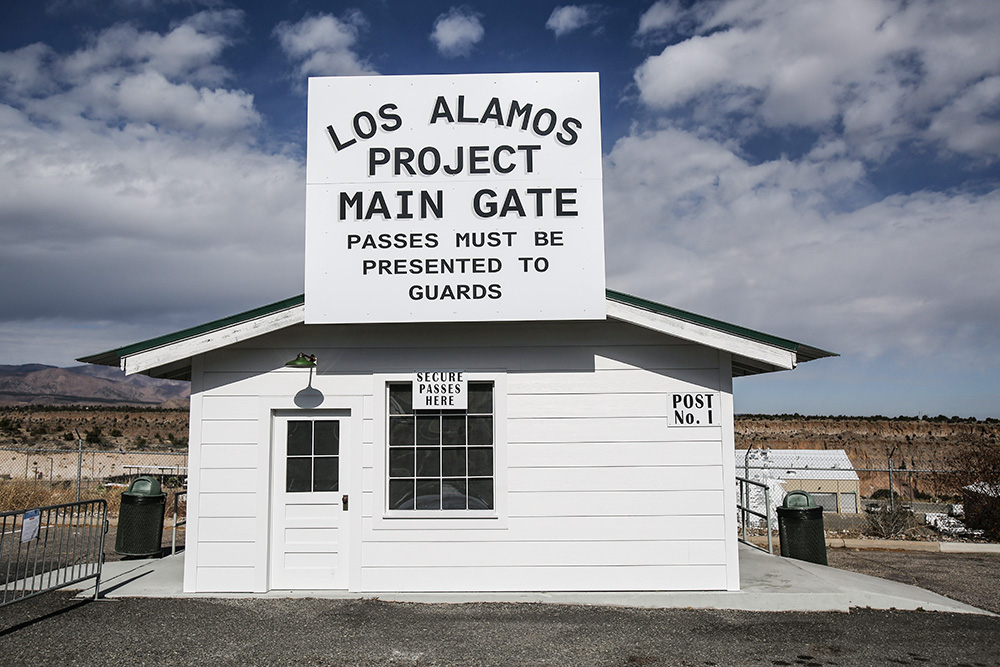
“We can no longer deny or ignore the dangerous predicament we have created for ourselves. We need to start talking about it with one another, all of us, and figure out concrete steps toward abolishing nuclear weapons and ending the nuclear threat.”
—Archbishop John Wester of Santa Fe, New Mexico, “Living in the Light of Christ’s Peace: A Conversation Toward Nuclear Disarmament“
Wester wrote those words in January 2022, a haunting call with a certain biblical resonance coming as they did from a place that doesn’t have a high profile on the ecclesial landscape. It was fitting, then, that a significant step in engaging a public conversation occurred recently at the University of New Mexico — where activists and religious leaders, including Wester and Cardinal Robert McElroy of San Diego, dared to engage with the unthinkable.
New Mexico, as the locale where the nuclear threat was born and where it continues to grow to dimensions beyond imagination, is at the heart of an existential global threat that poses a searing moral question for both church and state. In each realm we are forced to ask as we develop the means to destroy the world: Who are we?
The government is clear in where it is headed and how we define ourselves. Despite the history of hundreds of thousands of gruesome civilian deaths caused by the first uses of nuclear weapons at Hiroshima and Nagasaki, Japan, we have continued unabated in our quest to develop and refine weapons infinitely more destructive than those primitive examples.
The church was less clear, but is changing. Catholic teaching has steadily increased its objections over the decades until it finally, under Pope Francis, now unambiguously condemns even possession of nuclear weapons.
New Mexico forum highlights Catholic views on nuclear disarmament, deterrence
Archbishop John Wester of Santa Fe participated in the forum and said efforts to eliminate nuclear weapons can progress when “reasonable and good-willed people enter into a critical conversation.” These are the kinds of discussions Wester sought to stimulate after the 2022 release of his 52-page pastoral letter, “Living in the Light of Christ’s Peace: A Conversation Toward Nuclear Disarmament,” that challenges conventional political thinking that possessing nuclear weapons serves as a deterrence to potential attacks from other nuclear powers.
Wester wrote that the Archdiocese of Santa Fe has a special responsibility to support the Treaty on the Prohibition of Nuclear Weapons since New Mexico hosts two of the nation’s three nuclear weapons laboratories, the Los Alamos and Sandia National Laboratories. Additionally during World War II, he said, “much of the land for the Los Alamos Lab was seized from Native American ancestral lands and Hispanic homesteaders without adequate compensation, continuing the legacy of colonialism, racism and systemic violence.”
By Alejandra Molina, National Catholic Reporter | September 12, 2024 ncronline.org
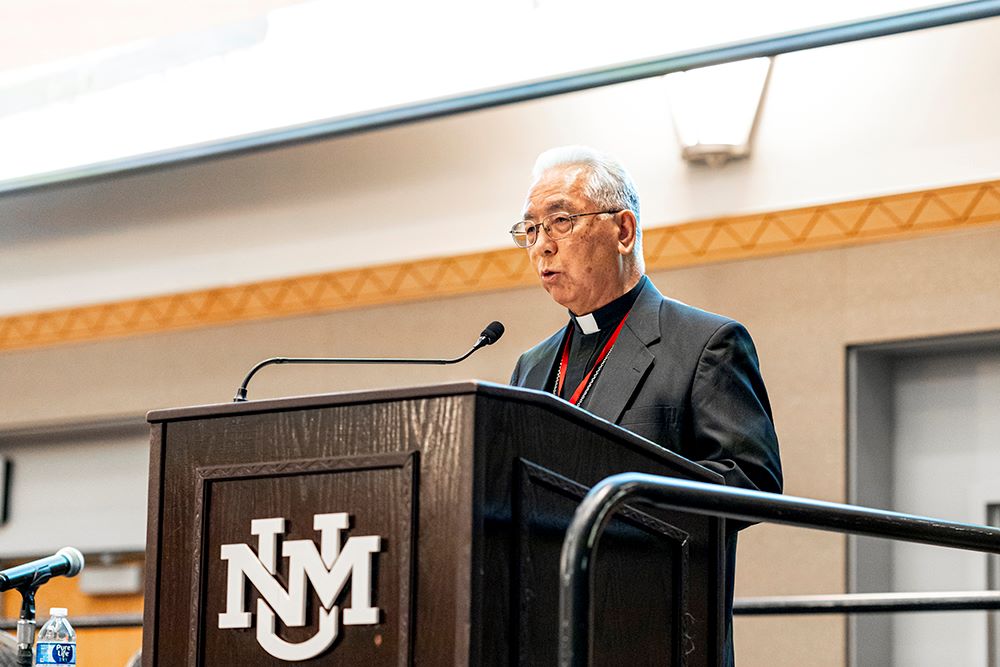
Tina Cordova has made it her life’s work to shed light on the negative health effects plaguing the people of New Mexico after the U.S. military detonated the world’s first atomic bomb at the Trinity test site July 16, 1945. To grasp the severity of the radiation exposure, Cordova says, “it’s important to understand our way of life.”
New Mexicans in that era relied on rivers and creeks as their main water source, and they ate what they cultivated from the soil. The radiation fallout from the detonation contaminated those sources. “We were maximally exposed,” says Cordova, who was raised in a town 45 miles from where the Trinity bomb was detonated.
Nevadans form anti-nuclear testing coalition amid resumption calls

By Jessica Hill, Las Vegas Review-Journal | September 13, 2024 reviewjournal.com
While Nevada once was a site of the country’s nuclear testing and continues to play a critical role in the maintenance of nation’s nuclear stockpile, some Silver State residents are raising the alarm….
Fate of interim storage at Supreme Court could be decided by October
The Fifth Circuit Court in 2023 ruled that the Atomic Energy Act, which created the NRC, did not give the agency the authority to license storage of spent fuel away from the reactors that created it.
By Dan Leone, The Exchange Monitor | September 6, 2024 exchangemonitor.com
Supreme Court justices were scheduled Sept. 30 to consider requests to overturn a ban on the private interim storage of spent nuclear fuel, according to a notice published Wednesday.
The two requests stem from a 2023 decision in a lawsuit filed by Texas in the U.S. Fifth Circuit Court of Appeals that voided a Nuclear Regulatory Commission license issued to Interim Storage Partners (ISP), a joint venture of Orano USA and Waste Control Specialists.
According to the dockets in both cases, NRC and ISP petitions for high-court review were to be distributed to the nine Supreme Court justices on Sept. 30.
After the justices review the petitions in what is officially called a conference, they will decide whether to hear arguments from attorneys, decide the case based only on briefs filed with the high court since June, or let the Fifth Court ruling stand.
Nuclear Waste ‘Interim’ Storage Updates
In June 2024, Holtec International, along with the U.S. Nuclear Regulatory Commission (NRC) and the Department of Justice, petitioned the U.S. Supreme Court to review a March ruling by the Fifth Circuit Court that vacated Holtec’s license to build a nuclear waste interim storage facility in New Mexico. The Fifth Circuit’s basis to vacate the license is that the NRC lacks the authority to license private interim storage sites like Holtec’s in New Mexico and a similar facility in Texas operated by Interim Storage Partners (ISP). Holtec’s petition to the Supreme Court aims to reverse the lower court’s ruling and allow the construction of the facility in southeastern New Mexico, which would store spent nuclear fuel “temporarily” while awaiting a permanent disposal solution.
Holtec contends that their operations are safe and necessary for managing the nation’s growing stockpile of nuclear waste. These sites and any transport to these sites are not only dangerous but environmentally unjust. New Mexico’s demographic is largely Latino. There are many communities of color, especially in the southern part of the state where the sites are being proposed. These sites present clear examples of environmental racism; people of color would be disproportionately affected if the Holtec/ISP CIS site were licensed and constructed.
For more background information, see:
Keeping a (Nuke)Watchful Eye on Consolidated Interim Storage: No High-Level Waste To New Mexico
Interim Storage Partners first applied for a federal license to build the site back in 2016. The NRC approved and licenced the facility in west Texas in 2021.
Key dates include the petition being docketed on June 27, 2024, and scheduled for the Supreme Court’s conference on September 30, 2024. During this conference, the justices will decide whether the Supreme Court agrees to hear the case (grants certiorari). If it does, oral arguments may be scheduled in late 2024 or early 2025, with a decision expected afterward. The timeline for any Supreme Court ruling could vary, but such cases often take several months for a decision following the grant of certiorari.
UPDATE – OCTOBER 4, 2024: The Supreme Court has granted certiorari, meaning the justices will hear arguments and decide the case.
From Courthouse News Service: “The court is expected to take up the case in its forthcoming term, which begins Monday. Arguments likely will begin next year, with a decision possible by the summer.”
For more information, see also: exchangemonitor.com/fate-of-interim-storage-at-supreme-court-could-be-decided-by-october
New Mexico pushes feds to send more nuclear waste from Las Alamos to WIPP
“‘Los Alamos National Laboratory must now immediately get to work and fill the Waste Isolation Pilot Plant with legacy waste. All excuses have been voided,’ [NMED Secretary] Kenney said. ‘This is the culmination of years of effort by the Environment Department, with this consent order being one more step in holding the Department of Energy accountable.'”
By Adrian Hedden, Carlsbad Current-Argus | September 6, 2024 currentargus.com
New Mexico officials ordered the federal government to remove Cold War-era nuclear waste away from Los Alamos National Laboratory and dispose of some of it at the Waste Isolation Pilot Plant near Carlsbad.
FULL EVENT RECORDING (Updated 9/9 – Audio Issues Fixed): Forum on Nuclear Strategy: Disarmament & Deterrence in a Dangerous World – September 7, 2024
ACTION ALERTS
Nothing Found
It seems we can’t find what you’re looking for. Perhaps searching can help.
Nothing Found
It seems we can’t find what you’re looking for. Perhaps searching can help.
Interfaith Panel Discussion on Nuclear Disarmament - August 9
Nothing Found
It seems we can’t find what you’re looking for. Perhaps searching can help.
New Nuclear Media
Nothing Found
It seems we can’t find what you’re looking for. Perhaps searching can help.

